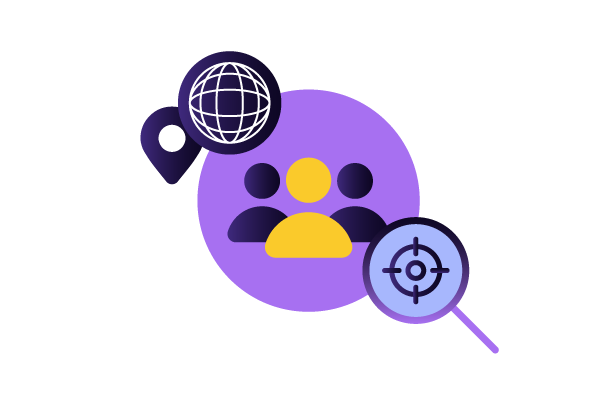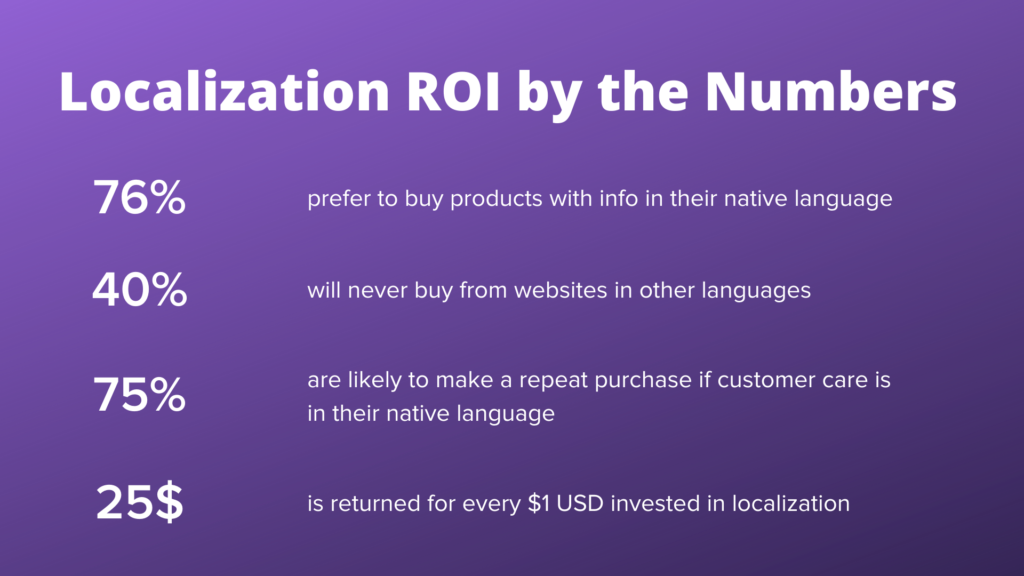
How to Identify Your Target Audience for Localization
Learning how to identify your target audience for localization is the first step to implementing a successful localization strategy.
They say that it’s a small world, but that adage has perhaps never been truer than it is today. Nowadays, you can connect with friends, loved ones, colleagues, and clients on the far side of the globe with just the click of a button. You can access live cameras to get a real-time view of the Amazonian rainforest or the bustling cities of Europe.
And you can market your company, your products, and your services to target audiences speaking a dozen different languages and residing in a score of foreign countries.
However, reaching such a broad, diverse, and multinational audience depends on far more than offering terrific service. You have to know who your customers are, what they want, what they need, and what they expect.
To be sure, these are goals common to every marketer and marketing campaign. However, they are particularly important when you are seeking to engage a foreign market, a market that may differ vastly from those you are familiar with.
Prioritize Existing Audiences
Before going out to look for new markets and audiences that you’ve never tapped into before, take a look at who you are already bringing in.
Even if you’ve never implemented a localization strategy before, there is a good chance your website and/or product is bringing people in from various regions.
So, start by targeting the most popular audiences you already have! Evidence points to the fact that 40% of people won’t buy if the website or product is not in their native language.
That 40% could translate to hundreds or thousands of new customers when you localize for that target audience.
Considering Relevance
When you are attempting to identify your target audience for localization, one of the first and most important things you can do is determine relevance for each market demographic. Seek to understand who stands to benefit from the product or service your company offers and how. Consider, as well, what logistical, cultural, or ideological barriers might prevent that audience from adopting your product.
For project managers, such comprehensive demographic research is often an essential launching point for a successful localization project. Understanding your global audience enables you not only to more effectively define project goals but also to formulate a multi-phased plan for achieving them.
Unleash The Power of Interdepartmental Teams
When it comes to understanding international markets, some departments within your organization are going to have a leg up. For example, your sales teams are crucial, as they are often the ones to spend the greatest amount of time interacting directly with your target customer.
As such, they can often provide corporate leadership and marketing teams with invaluable insight that could not be found in market research alone. This might include, for instance, information on the specific communication strategies that the target audience responds best to. They might also provide information on salient differences in communication patterns that could impact sales, marketing, and relationship management.
For instance, sales representatives may find that clients in the target global market respond best to the use of indirect rather than direct questioning. Or they may have noted that narratives and metaphors produce better results than objective explication. These nuances are critical to effective localization and the identification and engagement of the target audience.
Analyze What Your competitors Are Doing
Localization is one of the things you can do to get a competitive edge. But if your competition got that edge ahead of you, look at the bright side. You can take advantage of their localization efforts to benefit from their research.
See what regions they are targeting, the languages they have available for their website or product, etc.
Perform Market Research
You can usually see where the highest demand is for your services, either through the demand for your own product or via your competitors.
But it’s also useful to keep an eye on market trends. And this is not a one-time project. As time goes on, the regions that have the highest demand for what you are offering may change.
If you haven’t already, this may also be a good time to check the bigger picture. You can check how many competitors you have, find the strongest ones, and identify gaps that you can fill in with both localization and product functionality alike.
Identify Subcultures
Remember that localization is not the same as translation. Just because you are translating your content doesn’t mean that you are also effectively targeting everyone who speaks that language.
For example, think of English. We mostly use American English in the US, but there’s also UK English, CA, Scottish, etc.
All these people are speaking the same language, but the way they do it and their culture differ, and the same goes for many other areas of the world.
So, when you are translating your content to a new language, you can often identify subcultures to identify and target. You just have to look for them.
Measure and Adapt
The best business decisions are most often taken based on data, not personal opinions. And the same goes when you want to learn how to identify your target audience for localization.
In order to know whether your efforts are working or not, you’ll have to measure the results. After localizing your website and/or product for a target audience, you can keep your eye on matters such as:
- New customers per locale after localization
- Customer retention rate
- Traffic increase
- Conversion rate
And any other indicators that point to growth and signs that you’ve identified your correct audience for localization.
The Takeaway
Learning how to identify your target audience for localization is an essential step to getting started with localization.
The above seven steps can help you get the most out of your efforts. After all, just like there is an ideal customer profile for your business, there are also ideal customers for localization, depending on the demand and potential for your business.
Related posts
How to Cut Localization Costs by up to 40%
Localization Strategy Development With a Global Strategic Vision









